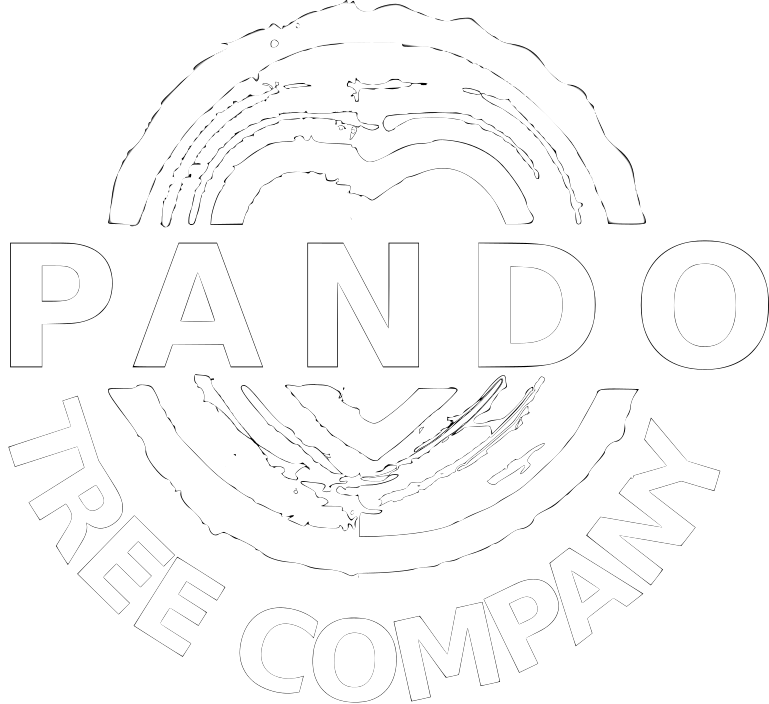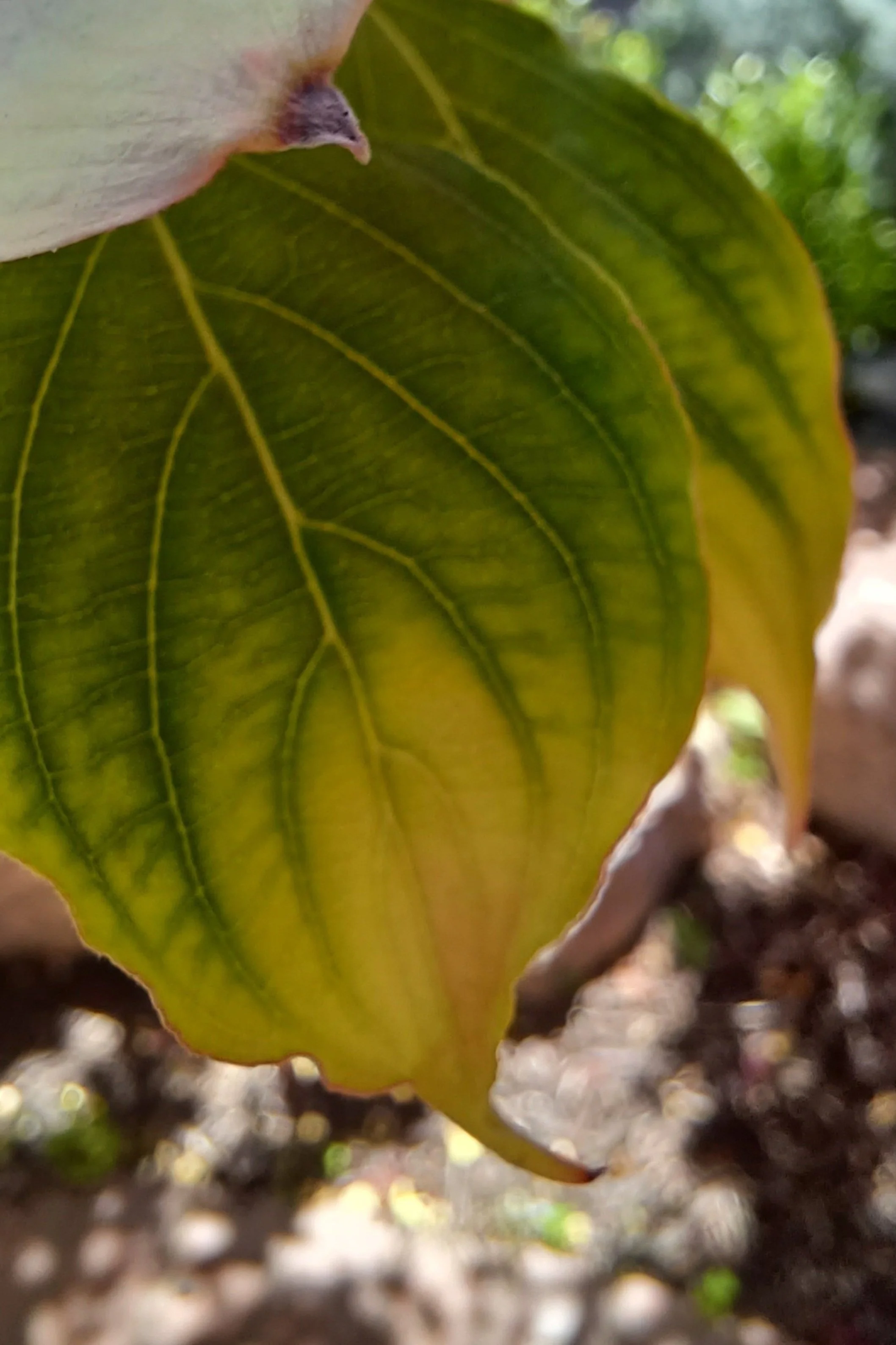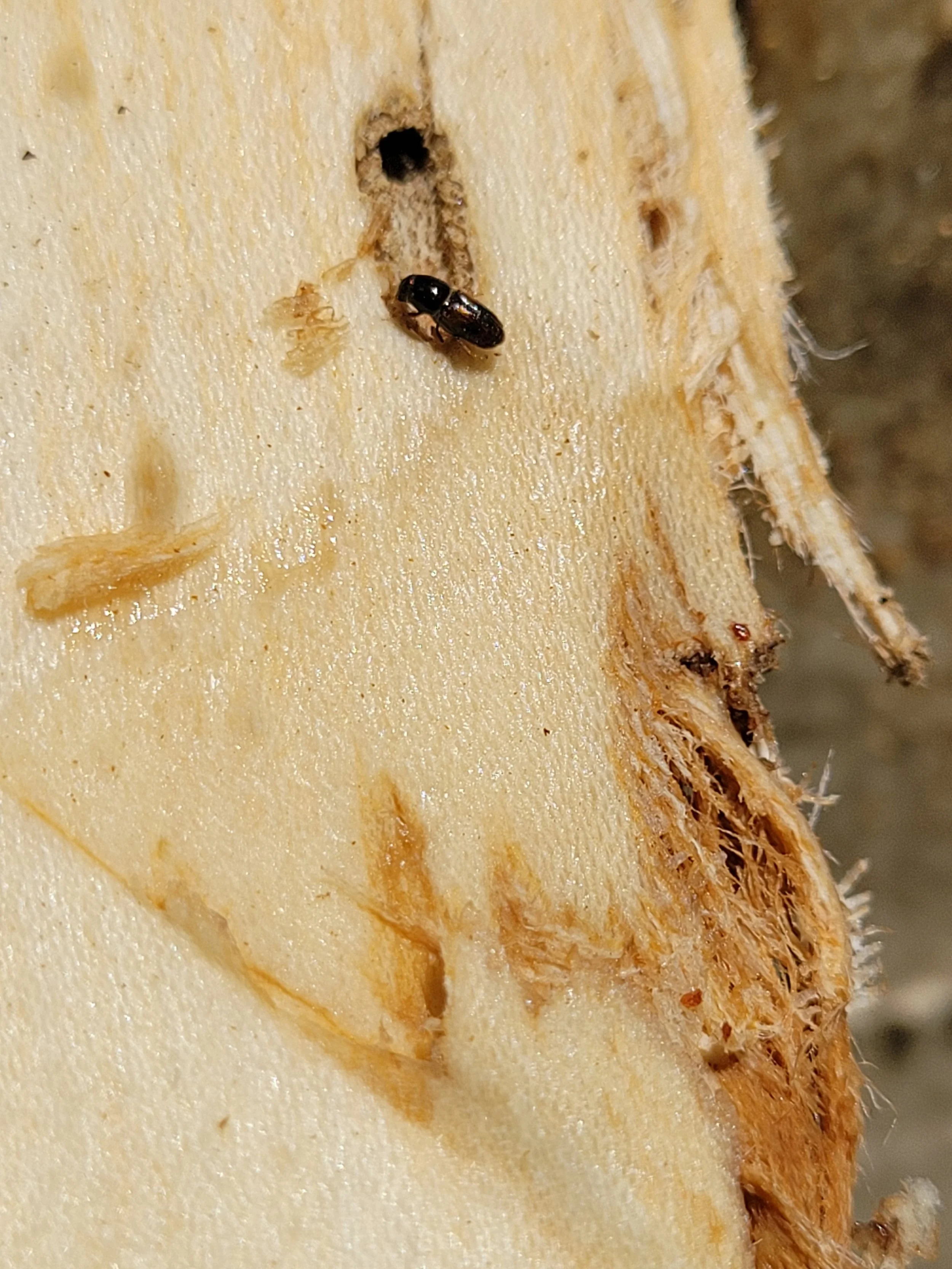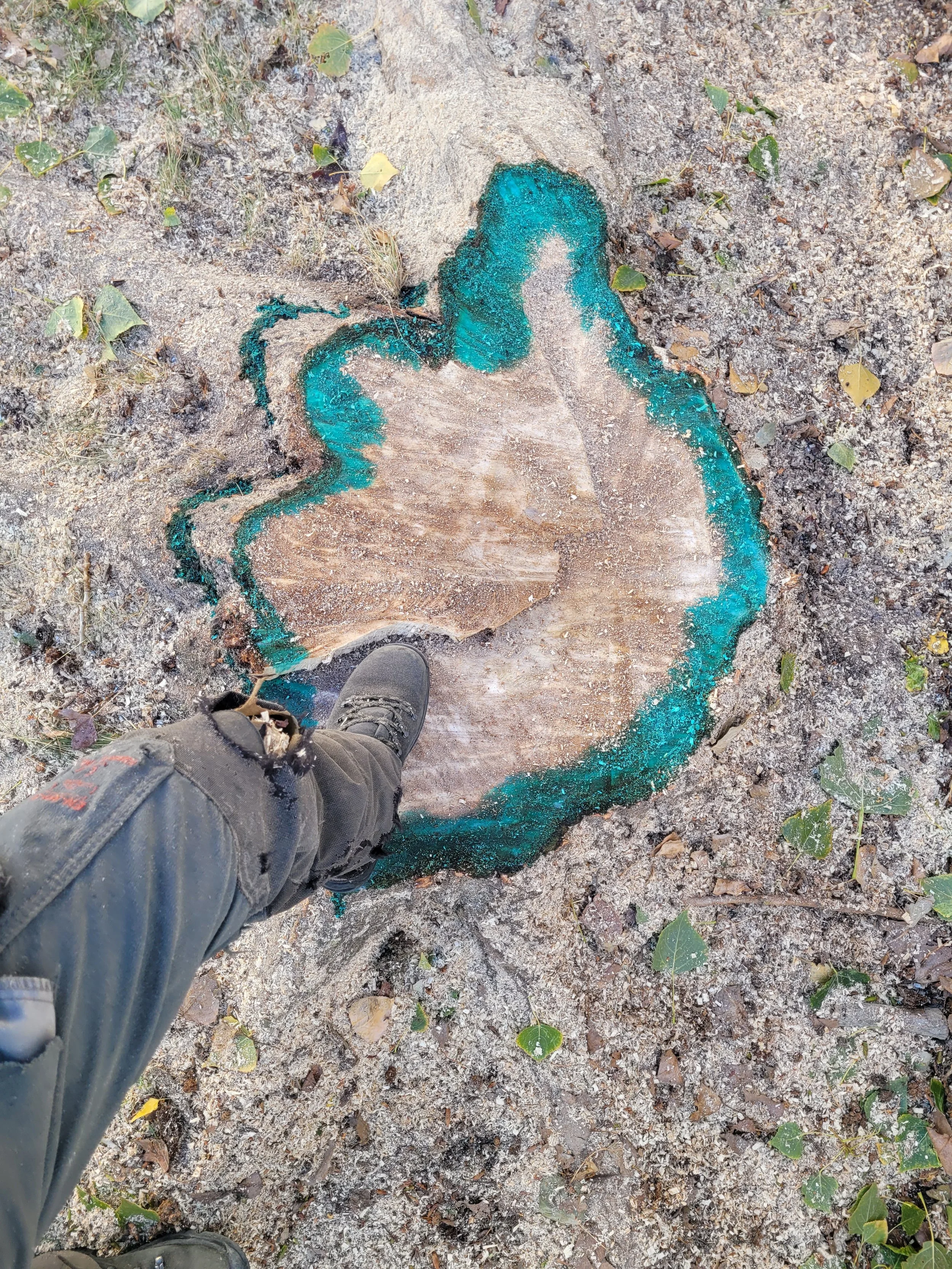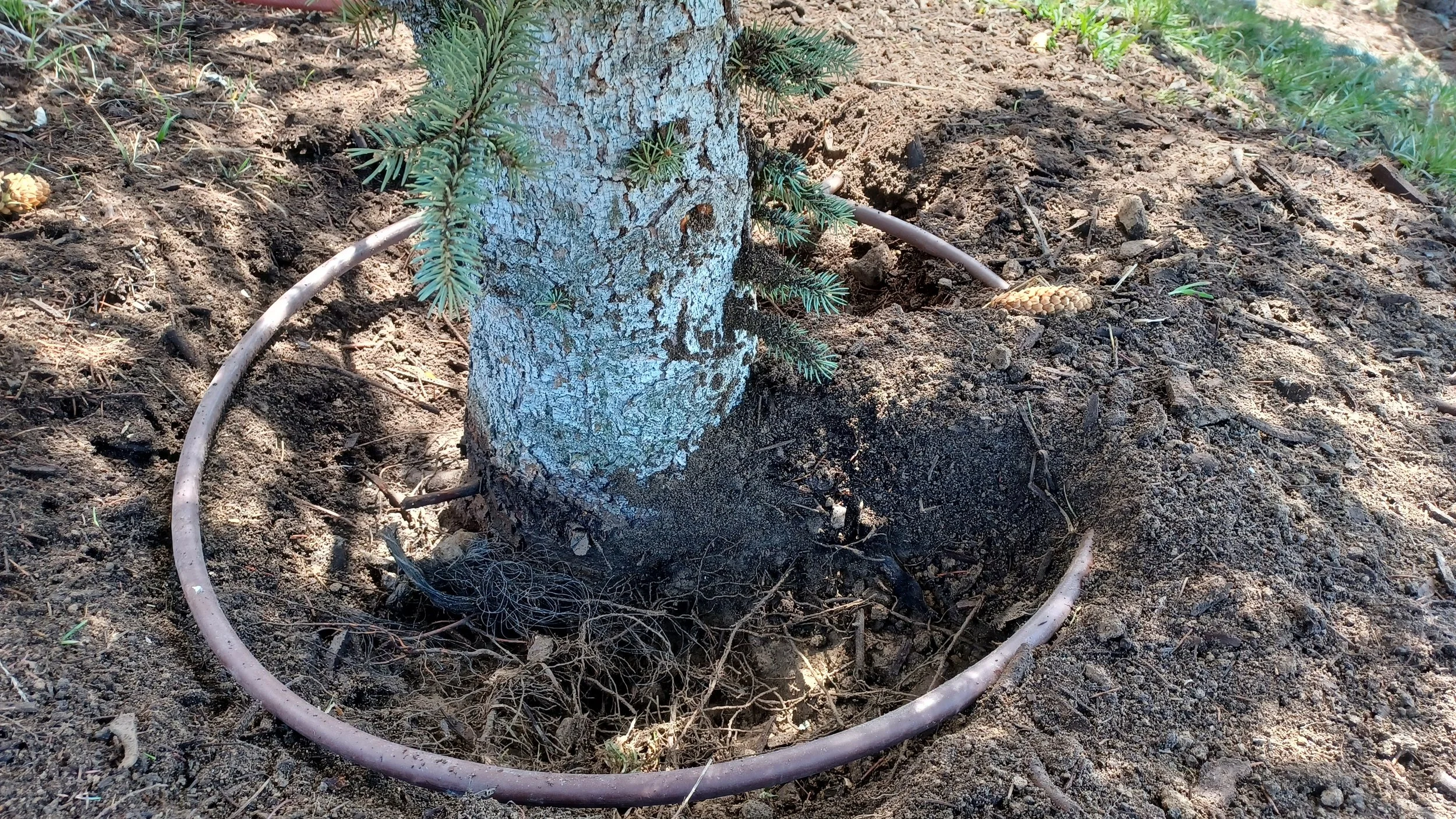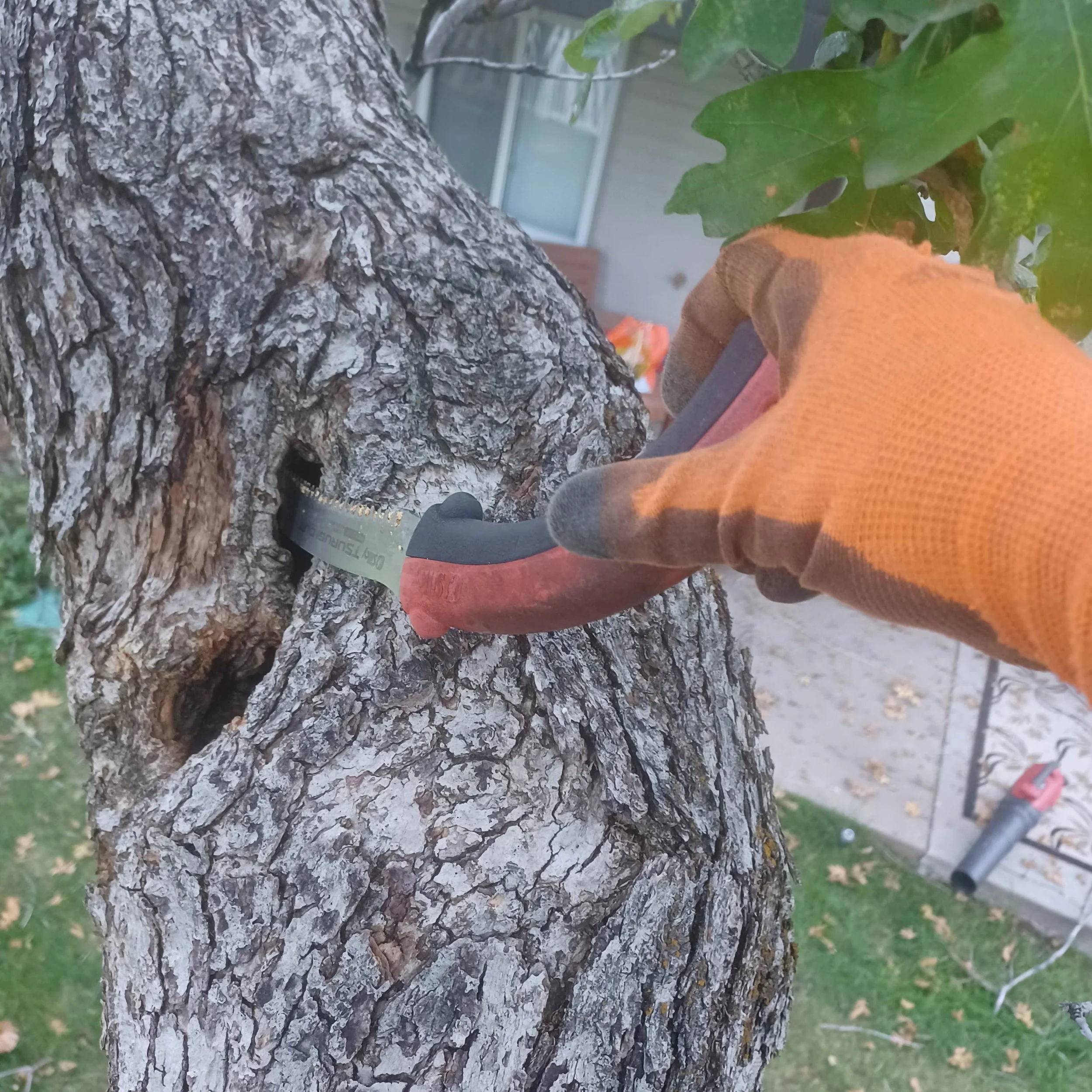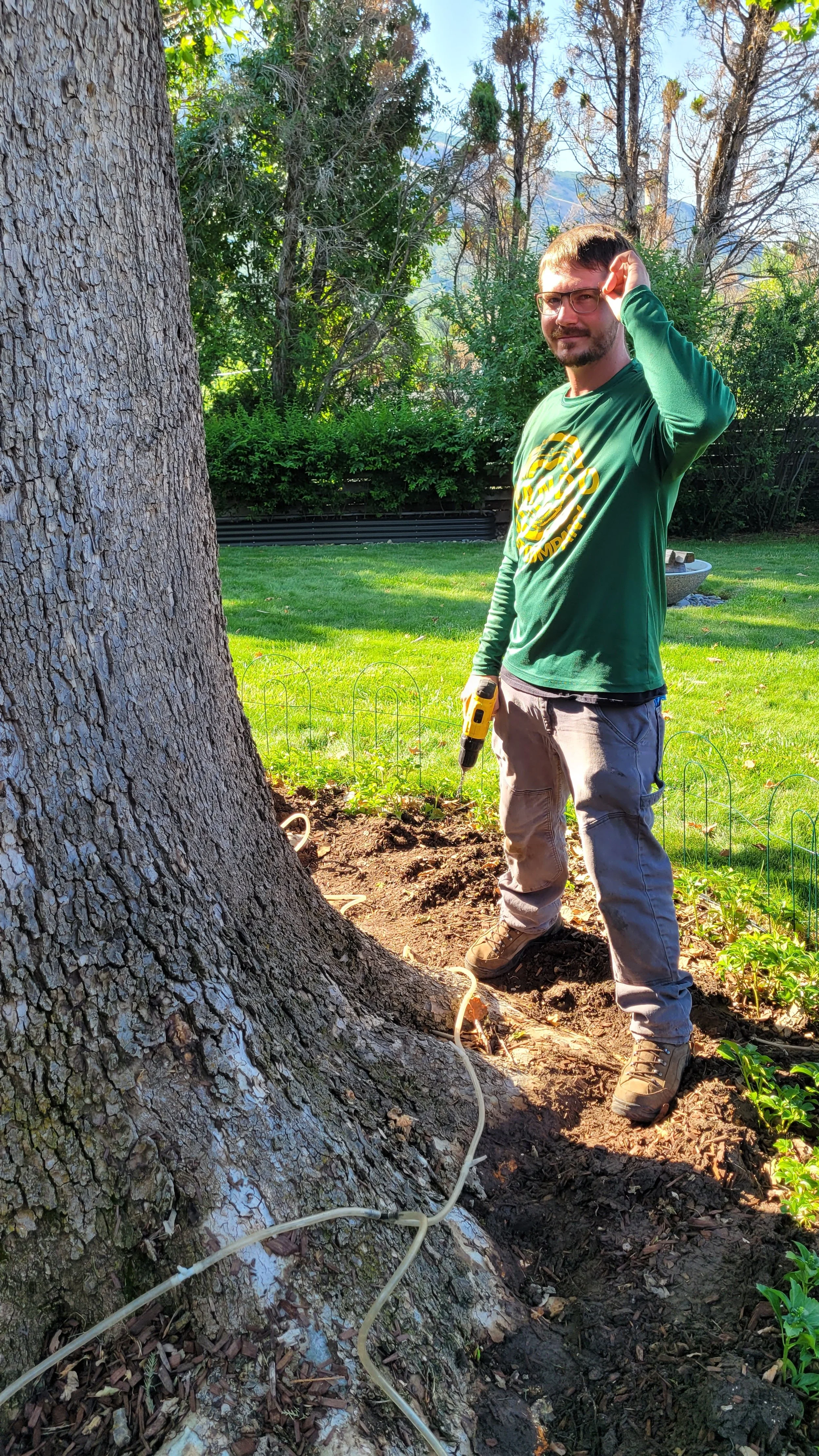What is Plant Health Care?
In the banner photo above, European pine sawfly larvae are eating away on Scotch pine needles. Without treatment, defoliaton of the tree's needles can result in decline or death.
Pests and diseases are not the only part of tree care though. Soil conditions, nutrients, and beneficial symbiotics help trees get healthy and stay healthy.
Why Hire an Arborist for Plant Health Care?
Trees are alive, which is what makes them beautiful. They have a great impact on the quality of a property and its value. But similar to humans, trees might require additional health support as they grow older. Don't get stuck having to remove a majestic heritage tree that could have been protected. It would take multiple human life spans to replace it.
What does Plant Health Care Services Cover?
Taking care of tree health is incredibly complex and requires a lot of knowledge, care, interest, and passion to do it right.
We use:
- Preventive measures such as growth regulators, structural support systems, and cavity checks.
- Nutrition boosts in the form of micronutrient injections or soil ammendmants.
- Pesticides to fight infections and infestations of insects, fungi, mites, and bacteria. (Pando does not spray pesticides. All of our treatments are injected directly into plant tissue or the soil around a trunk.)
Professional arborists prepare a mature sycamore tree for treatment against a fungal disease called sycamore anthracnose.
Have a plant health care specialist visit your landscape and inspect your plants. They can provide diagnoses and recommendations as needed.
Divisions of Plant Health Care:
- Nutrients and deficiencies
- Growth Regulation
- Pests and diseases
- Herbicides
- Soil Conditions
- Biostimulants
Chlorosis symptoms from a magnesium deficiency in a flowering dogwood leaf.
Nutrients and Nutrient deficiencies:
Utah soils are not ideal for most landscape plants. The high pH (basic soils) is hard on tress and frequently results in iron and manganese deficiencies in plants. These deficiencies are treatable with soil ammendments or trunk injections; resulting in healthy, vibrant trees with beautiful fall colors.
Many deficiencies can be identified by visual inspection. If not, plant tissue analysis and soil analysis can be done to pin down a plant's issue. Contact an local tree expert to help identify a nutrient difficiency in a tree.
Growth Regulation:
Growth regulators such as Cambistat® help slow down growth rates of plants, which has many secondary health benefits including drought tolerance and tolerance of nutrient deficient soils. There are many use cases for these products from size regulation to protection from fungal diseases. Nearly all trees in the Utah valley benefit from the health boon received from growth regulators for the drought tolerance alone. Contact an arborist at Pando Tree Company for pricing information.
Professional arborist and certified pesticide applicator Ryan Quinn applies Cambistat (growth regulator) to help treat leaf necrosis in a mature sycamore suffering an anthracnose fungal infection.
Elm bark beetle in a Siberian elm, visible after removing the bark from a cut down tree. These beetles are the main vector for Dutch Elm Disease.
Pests and diseases:
There are many pests and diseases that pose significant threats to tree and plant health in Utah. Treatment varies depending on the pest and tree species. Ask an expert tree doctor at Pando Tree Company to diagnose your tree's issue and formulate a treatment plan.
Herbicide:
Sometimes the pest is the tree itself. Maybe an invasive species like Siberian elm or tree of heavan cause damage to property or attract unwanted insects like elm seed bug. Pando Tree Company are exprets in local tree removal and have appropriate licensing and products to supress/prevent regrowth from stumps.
Siberian elm treated with an herbicide along the cambium to prevent regrowth.
This spruce trunk was buried in over a foot of excess soil and mulch. Root crown excavation enables proper exchange of gases and nutrients critical to the tree.
Soil Conditions:
Getting to the root of the problem sometimes means getting to the actual roots. Aside from soil components and resources, physical issues like soil compaction take a major toll on trees. Pando Tree Company has the resources to repair soils.
Mycorrhizae and Biostimulants
Trees haves symbiotic relationships with fungi called mycorrhizae. In Utah's poor soils, adding mycorrhizae can improve a tree's water and nutrient absorption.
Adding biostimulants can increase nutrient uptake, root development, and tolerance of environmental stresses.
Canopy Assessments and Structural Support
When trees are wounded they can develop cavities inside the wood that can leave a limb susceptible to breaking. Cavaties can be identified and measured. Compromised limbs can be supported with structural support systems and pruning.
Injuries can result in decay of interior wood, which can leave a limb or trunk compromised. Here an arborist is measuring the depth of a cavity in an oak tree.
What to Ask an Arborist Before Hiring Them
There are quite a few 'tree companies' out there charging a lot for poor work. It's hard for customers who aren't tree experts to assess. Here are a few things to ask a tree company before hiring them for plant health care.
- Can you provide a copy of your insurance?
- Are you a certified pesticide applicator? (Legally must be yes to provide services)
- Can you diagnose the problem? (unfortunately some people provide treatments before diagnosing, which could lead to wasted effort and $$)
- What are the pros and cons of treatment?
- Can you provide customer references?
Double Check!
Doub check your arborist’s credentials before hiring them..
Don't hesitate to double-check qualifications. Tree care is a long lasting investment. Best to get a great arborist the first time.
Costs of Plant Health Care
Health care takes a fair bit of resources. Usually costs per tree range from $100 to $2,000; depending on the size of tree and treatment being done. Considering how much it would cost to transplant a mature tree (millions) we think it is well worth the cost.
An arborist from Pando can measure your tree and provide a diagnosis with a treatment plan and quote.
Professional arborist getting ready to climb a giant sequoia in Ogden, UT
This article was created by Pando Tree Company owner Ryan Quinn, including all text, photos, and design elements. All work is subject to copyright ©2025 All rights reserved.
